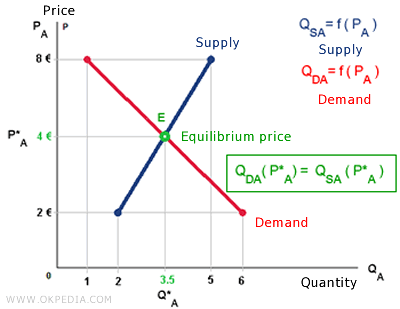Partial Economic Equilibrium
Partial economic equilibrium describes the equilibrium in a single market. In this type of analysis, equilibrium conditions are assessed within one market, independently from the rest of the economic system. Partial economic equilibrium is established at a particular price (the equilibrium price), where supply and demand are balanced specifically for that market. It can be conveniently illustrated on a Cartesian graph, showing the intersection between the demand curve and the supply curve for a given good or service (often referred to as the Marshallian cross).

The Cartesian graph used to illustrate market equilibrium is grounded in the analytical approach of British economist Alfred Marshall, who introduced the “ceteris paribus” (all else being equal) assumption into economic analysis. Marshall’s work focuses on the equilibrium of individual markets, assuming that other markets remain unaffected. The equilibrium within a single market is thus determined solely by the specific demand and supply for a good or service (partial equilibrium), without influence from other markets.
 General Economic Equilibrium. Partial economic equilibrium analysis is distinct from general economic equilibrium analysis, which considers equilibrium conditions across all markets within the economic system.
General Economic Equilibrium. Partial economic equilibrium analysis is distinct from general economic equilibrium analysis, which considers equilibrium conditions across all markets within the economic system.
